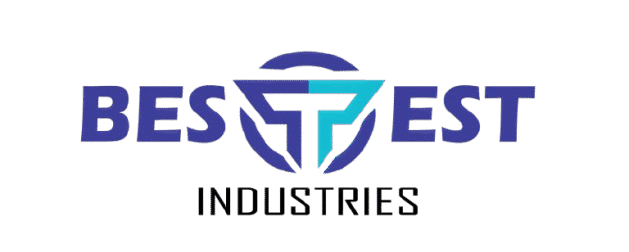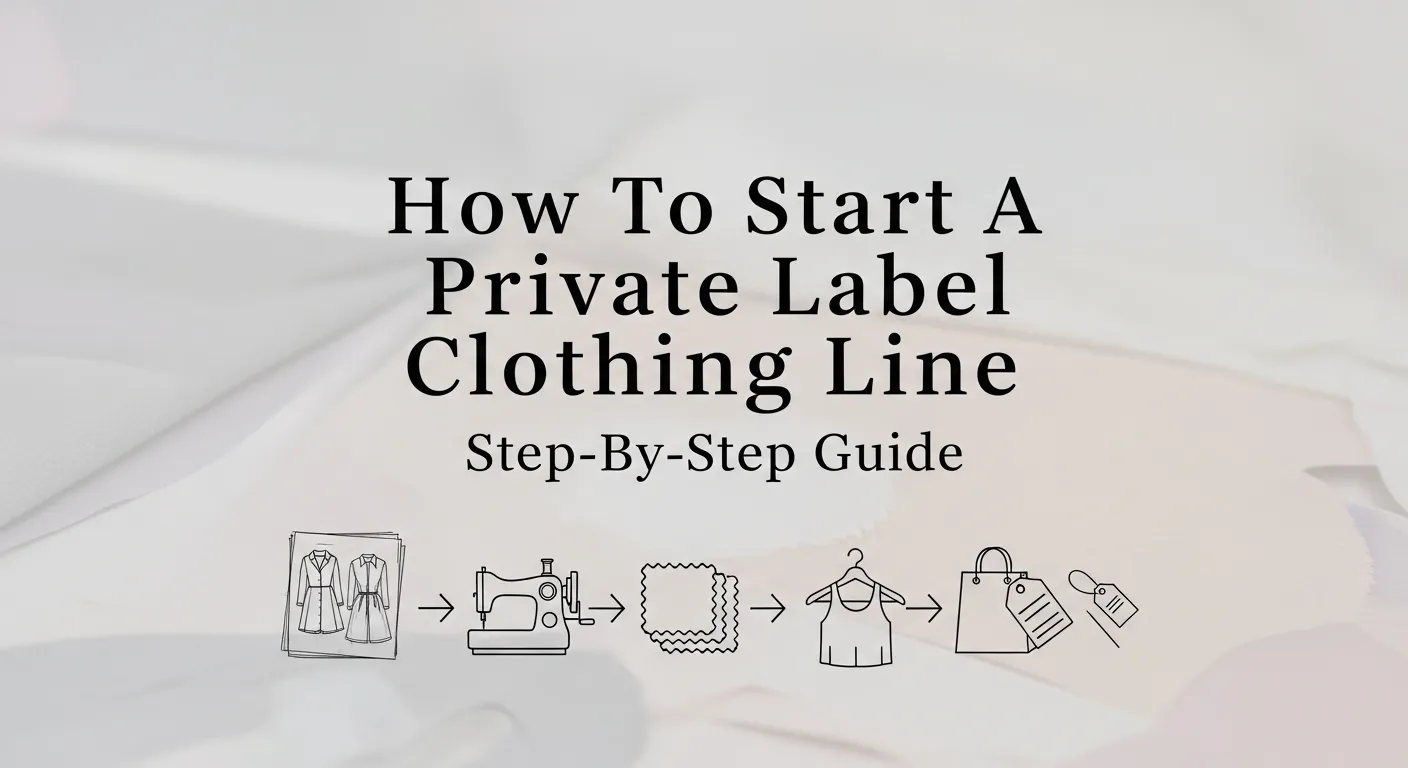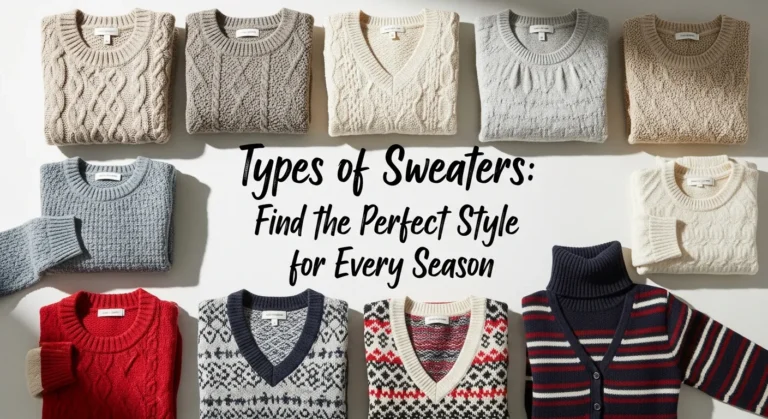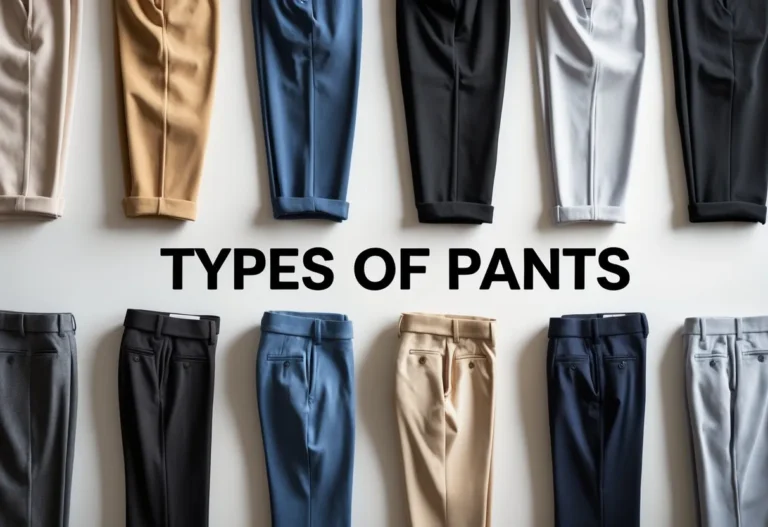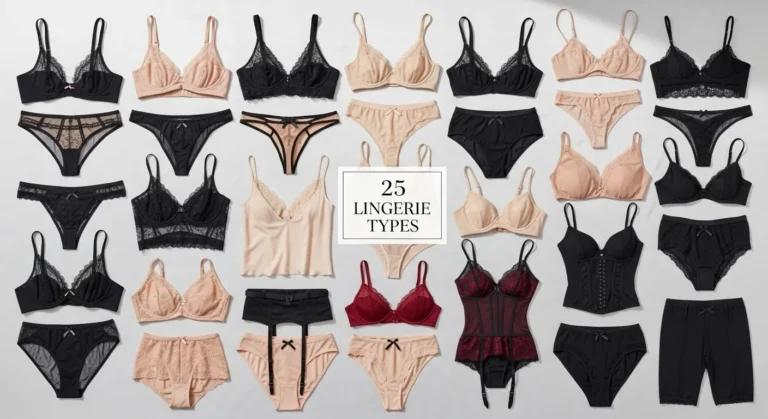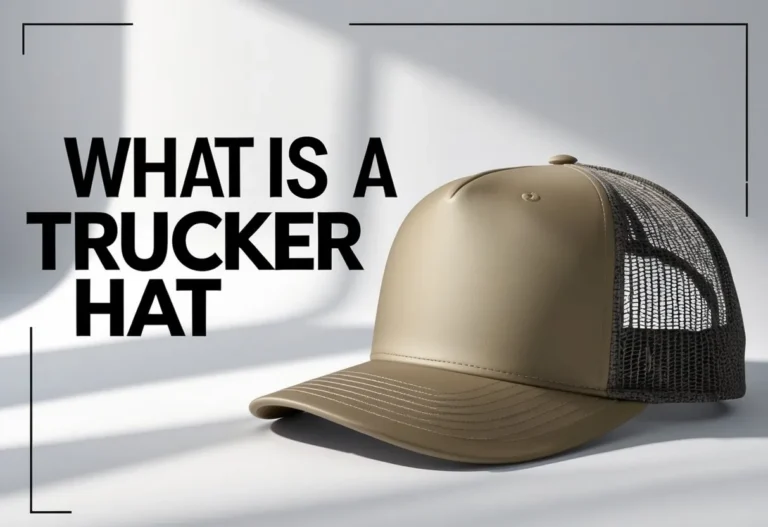How To Start A Private Label Clothing Line: Step-By-Step Guide
Starting a private label clothing line means selling clothes made by someone else but under your own brand name. It lets people create a fashion business without having to make the clothes themselves. The key to starting is choosing the right products, finding a good manufacturer, and building a brand that customers like.
To succeed, it is important to know who the clothes are for and what style will stand out. You also need to make sure the clothes are good quality and that your brand looks professional. With the right plan,.How To Start A Private Label Clothing Line and less risky than making every piece yourself.
Many entrepreneurs use private label because it cuts down costs and saves time. By focusing on design, marketing, and customer needs, they can grow their clothing line and compete in the market.
Key Takeways
- Success starts by picking products and a style that customers want.
- Good quality and clear branding make the clothes stand out.
- Working with the right manufacturer helps keep costs and risks low.
Understanding Private Label Clothing
Starting a private label clothing line means working with products made by someone else but sold under your own brand. This approach helps people create and market clothes without making every item themselves. There are clear differences in how much control and uniqueness a business can have depending on the manufacturing method they choose.
What Is Private Label Clothing?
Private label clothing means a company sells clothes made by a third party. The clothes carry the company’s brand name, but the company doesn’t make the clothes themselves. Instead, they handle the design, packaging, and marketing, while the manufacturer makes the garments.
This model lets businesses control their brand image without building a factory. Private label clothing lines often use ready-made designs that allow some changes, like colors or fabrics, but not full custom products.
Benefits Of Private Label Clothing Lines
Private label businesses are popular because they usually cost less to start compared to making clothes from scratch. This lowers the risk for new clothing brands.
Companies get to set their own prices and build a brand that people recognize. They also can launch their clothing line faster since many private label makers offer quick options and small minimum orders.
This setup is good for those who want to focus on marketing and growing their brand instead of worrying about manufacturing details.
Private Label vs. White Label vs. Custom Manufacturing
| Type | Description | Customization Level | Cost & Time |
|---|---|---|---|
| Private Label | Clothes made by a third party, branded by you | Medium – some design changes allowed | Moderate cost and time |
| White Label | Same ready product sold to many brands | Low – only packaging changes | Low cost, fastest launch |
| Custom Manufacturing | Fully unique clothes built from your ideas | High – full design control | High cost and more time |
Private label strikes a balance. It offers more design input than white label but is less costly and faster than custom manufacturing. This makes it a good choice for new brands wanting control without high risks.
Finding Your Niche And Target Market
Choosing the right niche and target market helps a private label brand stand out. It guides the design, style, and marketing. A clear focus makes it easier to find customers and grow the clothing business.
Researching Fashion Trends
To find success, entrepreneurs should look at current fashion trends. This means checking popular styles, colors, and fabrics seen in stores and online. Trends can shift fast, so using websites, social media, and fashion magazines helps keep up.
It is important to pick trends that fit the brand’s style and the intended customers. For example, if the brand focuses on sportswear, it should watch what activewear is popular. Ignoring trends can make products less attractive to buyers.
Identifying Your Target Customers
Knowing who will buy the clothes is key. Entrepreneurs must think about age, gender, lifestyle, and hobbies. Everyone has different tastes, so knowing these details helps design better products and market them well.
Creating a simple customer profile or list can help. For example, a target market might be women aged 18-30 who like casual, comfortable fashion. This helps pick styles and ads that speak directly to this group.
Choosing Your Product Niche
The niche is the special part of the clothing business where the brand focuses. This could be t-shirts, hoodies, or eco-friendly clothes. Picking the right product niche helps avoid competition and meet customer needs.
Entrepreneurs should consider what they know well or enjoy. It’s easier to sell items they care about or understand. The niche should also match what the target market wants and what fashion trends support.
| Step | Purpose | Example |
|---|---|---|
| Research fashion trends | Find popular styles and fabrics | Look at Instagram for streetwear trends |
| Identify target customers | Know who will buy the clothes | Women, 18-30, casual wear fans |
| Choose product niche | Focus on specific products | Eco-friendly t-shirts |
Building Your Brand Identity

A strong brand identity helps a private label clothing line stand out. It includes clear choices about the business name, logo, and the story the brand tells. These parts work together to make the brand easy to recognize and trustworthy to customers.
Picking A Brand Name
The brand name should be easy to say and remember. It needs to fit the style and values of the clothing line. Names that hint at the product type or target audience work well. For example, a name like “Green Threads” suggests eco-friendly clothes.
Avoid names that are hard to spell or too long. Check if the name is already used online and for trademarks to avoid legal trouble. The right name creates a clear first impression and can help customers find the brand on websites or social media.
Designing Your Logo
A logo is a simple picture or symbol that shows what a brand looks like. It should be unique but easy to understand at a quick glance. Most logos use shapes and colors that connect to the brand’s style and values.
Colors in the logo should match the clothing line’s vibe, like green for natural clothes or bright colors for fun styles. The design must look good on labels, tags, and websites, even when small. A good logo helps people remember the brand and builds trust.
Defining Brand Voice And Story
Brand voice is how the brand talks to customers. It should fit the brand’s personality, like friendly, serious, or fun. Using the same tone in all messages helps people know what to expect.
The brand story tells why the brand exists. It can include how it started, its mission, or its values. Stories about using eco-friendly materials or supporting local workers can connect with buyers. A clear voice and story make the brand feel real and help customers feel loyal.
Designing Your Clothing Line
Designing a private label clothing line means making clear choices about how clothes will look and feel. This involves working with helpful designers, picking the best fabrics, and making detailed drawings or instructions. These steps help create clothes that fit the brand’s style and meet customer needs.
Working With Designers
Designers help turn clothing ideas into real products. They know how to create styles that attract customers. A good designer listens to the brand’s vision and creates clothes that match it. They can suggest changes to make designs easier or cheaper to make without losing style.
Designers may work alone or in teams. It helps to find one with experience in private label clothing. They can guide on trends, fits, and materials. Communication is important. Clear talks about what the brand wants save time and money.
Fabric Selection And Materials
Choosing the right fabric is key for quality and comfort. The fabric affects how clothes look and last. Some common fabrics include cotton, polyester, and blends. Each has strong points, like softness or durability.
Brands should pick fabrics that match their style and budget. It’s also good to consider how easy a fabric is to clean or wear for a long time. Suppliers often offer swatches so brands can feel the fabric before ordering.
Creating Tech Packs Or Sketches
Tech packs and sketches are like blueprints for clothing. Sketches show how the clothes will look. Tech packs give details for making the clothes, such as sizes, stitching, and fabrics.
Tech packs guide manufacturers to make the design exactly as planned. They include drawings, measurements, fabric types, colors, and trims. This helps avoid mistakes during production and keeps quality consistent.
Clear and complete tech packs save time in making samples and producing final products. They are an important tool in starting a private label clothing line.
Choosing And Working With Manufacturers

Choosing the right manufacturer is important for making good clothes on time. It means finding someone who can produce quality items, handle the needed amount, and talk clearly. Knowing what to ask, how much they can make, and how fast they work helps avoid problems later. Good communication keeps everything running smoothly from start to finish.
Finding The Right Manufacturer
Finding the right manufacturer means looking for one with experience in private labeling. They should know how to make the kind of clothes the brand needs. Checking places like trade shows or online directories can help find options. Reviews and references from other brands also give good clues about their work.
It is important to find a manufacturer who offers full services. This includes helping with materials, sewing, quality checks, and shipping. A one-stop partner saves time and reduces mistakes. The manufacturer should also be able to make the right amount of product without lowering quality.
Questions To Ask Manufacturers
Before choosing, ask detailed questions to make sure the manufacturer fits the brand’s needs. Some good questions are:
- What is the minimum order quantity (MOQ)?
- Can you handle custom labels and packaging?
- What types of fabrics do you work with?
- How do you control product quality?
- Do you offer full-package manufacturing?
- Can you provide samples before mass production?
Asking these helps avoid surprises and ensures they can deliver what the brand expects.
Understanding Production Capacity And Turnaround Time
Production capacity means how many clothes the manufacturer can make in a certain time. Knowing this helps plan orders and sales. It’s important to pick a manufacturer that can handle big or small batches depending on the brand’s size.
Turnaround time is how long it takes from order to finished shipment. Rapid turnaround helps brands meet market demands and sell on time. Asking for clear timelines and delivery schedules reduces the risk of delays. Buffer days should be added to handle unexpected problems.
Building Strong Communication
Strong communication is key when working with manufacturers. Both sides should be clear and quick to reply to questions or changes. It helps solve issues early and keeps production on track.
Assigning a dedicated contact person or project manager makes communication easier. Using tools like email, phone calls, or messaging apps keeps everyone updated. Sharing detailed documents, like tech packs and quality check reports, makes sure both sides understand what the finished product should look like.
Branding And Packaging Design

A strong brand looks professional and builds trust with customers. Good packaging protects the product and shows the brand’s style. Both labels and packaging need to match the brand’s message and make the product stand out on shelves or online.
Creating Custom Labels And Tags
Custom labels and tags help show who made the clothes and what the brand stands for. They usually include the brand logo, size, care instructions, and sometimes a small story about the product.
Brands should pick easy-to-read fonts and colors that match their style. Labels can be woven or printed, depending on the budget and look. Tags can be made from paper or fabric and can include special features like embossing or metallic foil to make them feel unique.
Adding a label with care instructions helps customers keep the clothing in good shape. The right label size and placement are also important so it doesn’t bother the wearer but stays visible.
Packaging Ideas For Your Brand
Packaging is the first thing a customer sees, so it should be neat and match the brand’s look. Many brands use eco-friendly materials like recycled paper or cardboard since it appeals to more buyers today.
Boxes, bags, and tissue paper can all carry the brand’s colors and logo. Some brands add stickers or ribbons to make the packaging feel special.
Clear packaging with the logo can help show off the clothes but still keep them safe. Adding a personalized thank you note inside the package can make customers feel appreciated and encourage them to buy again.
Packaging should protect the product during shipping but also fit well with the brand’s story and style.
Quality Control And Legal Requirements
Starting a private label clothing line means making sure products are good and following laws that apply. This includes checking how clothes are made, protecting the brand name, and meeting rules set by the clothing industry. These steps help keep the business safe and trustworthy.
Setting Quality Control Standards
Quality control means checking each product to make sure it looks and feels right. The business should test samples for things like fabric strength, stitching, and fit. Any problems should be fixed before making a large number of clothes.
It is important to make clear rules about how the clothes should be made. These rules explain the type of fabric, sizes, and details like labels or tags. The manufacturer must follow these rules closely to keep the brand’s quality steady.
Regular checks during production stop mistakes early. This reduces returns and unhappy customers. Quality control helps build trust in the private label clothing business and keeps customers coming back.
Trademarking Your Brand
A trademark is a legal way to protect the clothing brand’s name and logo. Registering a trademark stops others from using the same or similar names. This helps the business keep its unique identity.
The process involves applying through the government to get official rights over the brand name and logo. Having a trademark also allows the business to take legal action if someone tries to copy the brand.
Owners should choose a brand name that is easy to remember and hard to copy. They should also use the trademark symbol (™ or ®) on all products to show the brand is protected.
Complying With Industry Regulations
The clothing business must follow rules about safety, labeling, and working conditions. These regulations protect customers and workers. For example, labels must show fabric content, washing instructions, and country of origin.
Private label companies must also meet standards about chemicals used in fabrics, avoiding harmful substances. This keeps clothes safe to wear and helps the brand avoid fines.
Following these rules means the business will pass inspections and avoid legal problems. It shows customers the brand cares about their safety and ethical production. Compliance is a key part of running a trusted private label clothing line.
Distribution And Launching Your Clothing Brand

After designing and making your clothing line, the next step is to plan how to get your products to customers and start selling. This includes deciding where to sell, how to ship, and preparing for the launch day.
Creating A Distribution Plan
A distribution plan shows how the clothing brand will deliver products to customers or stores. It includes choosing shipping methods, managing inventory, and working with partners.
The brand needs to decide if it will ship products directly to customers or use stores and warehouses. For example, using a warehouse can help store many clothes and send them quickly.
It is important to find reliable shipping companies that deliver on time and keep costs low. The plan should also consider packaging that protects clothes and fits the brand’s image.
Tracking orders and stock is key. This helps avoid delays and keeps customers happy.
Online And Offline Sales Channels
A private label clothing brand must pick where to sell products.
Online sales are popular because they reach many people. Using a website or platforms like Amazon or Etsy helps sell directly to customers. Social media and ads can also bring traffic to the online store.
Offline sales mean selling in physical stores or markets. This can include local boutiques or pop-up shops. It helps customers see and try clothes in person.
Many brands use both online and offline channels. This gives more chances to sell and reach different customers.
Getting Ready For Launch
Before selling, the brand must get ready for launch day.
This includes making sure there is enough stock for orders. The brand should have photos and descriptions of each product ready.
Marketing is important. Using social media posts, emails, or events helps tell people about the brand and launch day.
The brand should also check legal steps, like trademarks or business licenses, to avoid problems later.
Finally, it helps to plan how to handle customer questions and returns right from the start. This builds trust and a good reputation.
Top 5 Private Label Clothing Manufacturers
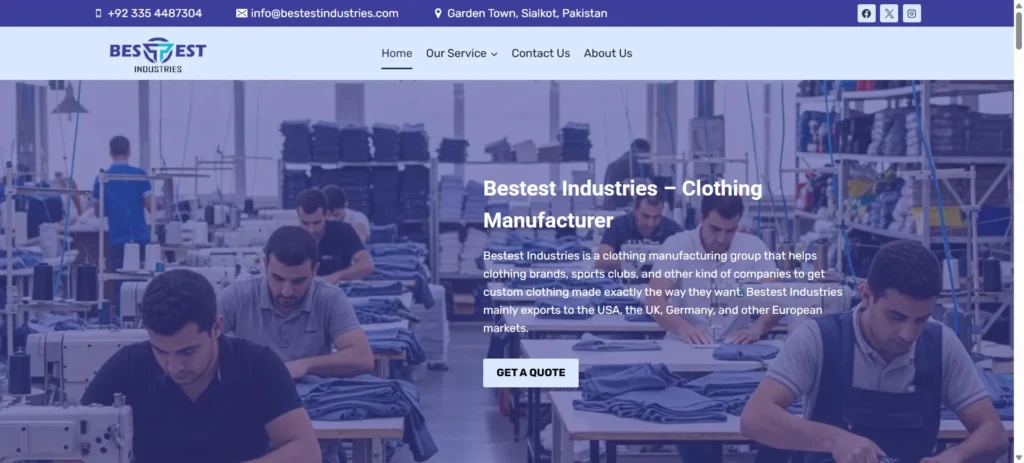
When starting a private label clothing line, choosing the right manufacturer is very important. These companies help create your designs into real clothes. They handle making the products so you can focus on your brand.
Here are five good private label clothing manufacturers. Each is known for different strengths and services.
| Manufacturer | Location | Special Features | Minimum Order | Best For |
|---|---|---|---|---|
| Bestest Industries | USA | Fast production, good quality | 20 pcs / deisgn | Small to medium brands |
| Baagh Enterprises | Pakistan | Affordable pricing, large capacity | 20 pcs / deisgn | Cost-effective options |
| Nofal Apparel | Bangladesh | Focus on sustainable fabrics | Low | Eco-friendly clothing |
| Tack Apparel | USA | Custom designs, quick samples | Low | Designers needing samples |
| Zega Apparel | USA | Full service, branding support | 50 pcs / deisgn | Premium quality brands |
Bestest Industries offers quick turnaround and high quality. It is great for new brands that want to start small.
Baagh Enterprises is best if you want low prices and bigger orders. They can handle big projects well.
Nofal Apparel focuses on green and eco-friendly clothes. Brands wanting to be sustainable work well with them.
Tack Apparel allows custom samples fast. This helps designers who want to see their ideas before they order in bulk.
Zega Apparel gives a full service, including labeling and packaging. It works well for brands that want a polished look.
Frequently Asked Questions
Starting a private label clothing line involves choosing a niche, creating designs, finding a factory, and selling online. It also requires some money to invest and ways to tell people about the brand.
What do I need to do first to make my own clothes brand?
First, they should pick a clear niche or style for their clothing. Next, research who will buy the clothes. After that, plan the brand name, logo, and look.
How much money should I have to start my clothing business?
They usually need a few thousand dollars. This covers designs, samples, bulk orders, packaging, and marketing. Costs can be more or less depending on the size of the order.
How do I create designs for my clothes?
They can draw ideas themselves or hire a designer. Using design software or simple sketches works. Designs should fit the style they want to sell.
Where can I find a factory to make my clothes?
They can search online for private label manufacturers. Some sites connect businesses with factories. It’s important to check the factory’s reviews and ask for samples first.
What are the steps to sell my clothes online?
They need to build a website or use a shop platform like Shopify. Then, add product photos, descriptions, and prices. After that, they set up payment and shipping options.
How do I make people know about my clothing line?
They can use social media to share photos and news. Running ads or working with influencers helps too. It’s good to keep talking to customers and ask for feedback.
